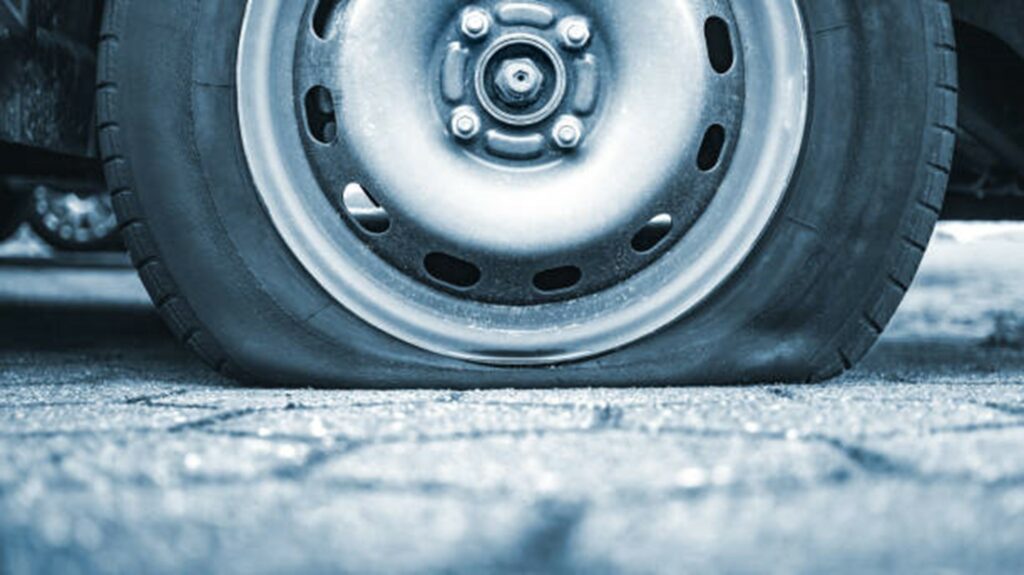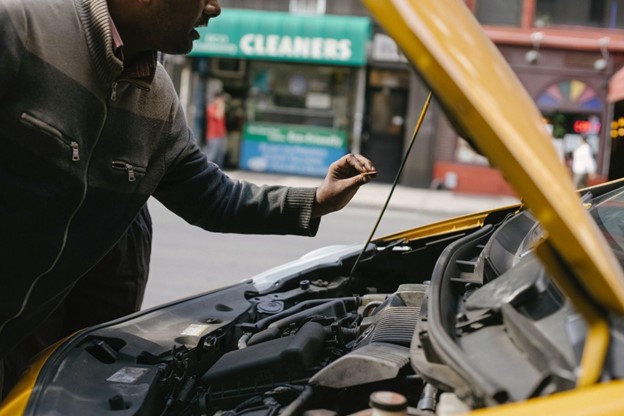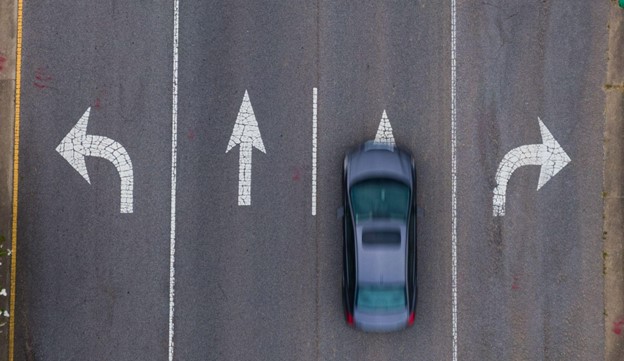Introduction
Hey there, fellow road warriors! We’ve all been there – cruising down the highway, tunes blaring, wind in our hair, and then suddenly, BOOM! A flat tire, a sputtering engine, or maybe even an unexpected run-in with Bambi. It’s moments like these that put our roadside safety skills to the test. Fear not! In this blog, we’re diving deep into the art of navigating roadside safety and emergencies. We’ll arm you with seven techniques that will make you feel like a true roadside superhero.
So, fasten your seatbelts, and let’s hit the road to discover the ultimate roadside safety maneuvers!
1. Flat Tire Finesse

Picture this: You’re on a serene country road when suddenly, you hear that dreaded hissing sound. Yep, you’ve got a flat tire. Don’t fret; we’ve got your back!
Technique 1: Pull Over Safely
- When you notice a flat tire, don’t slam on the brakes! Gradually reduce your speed and steer to the shoulder or a safe spot away from traffic.
- Use your hazard lights to signal other drivers that you’re in distress.
Technique 2: Gather Your Tools
- Pop your trunk and grab your spare tire, jack, and lug wrench.
- Pro tip: Ensure you have a flashlight, gloves, and reflective triangles for added safety.
Technique 3: Jack it Up
- Find the proper jacking point on your car (check your vehicle’s manual if you’re unsure).
- Lift the car, remove the flat tire, and replace it with the spare.
Technique 4: Tighten Like a Pro
- Use the lug wrench to tighten the lug nuts in a star pattern.
- Check your spare’s air pressure, too!

2. Jump-Start Jedi
Uh-oh, your car won’t start! Before you break into a sweat, consider this your crash course in jump-starting your ride.
Technique 1: Safety First
- Park both vehicles (yours and the donor) nose-to-nose or side-by-side, ensuring they don’t touch.
- Turn off both cars’ ignitions and engage the parking brakes.
Technique 2: Pop the Hoods
- Open both hoods and locate the batteries.
- Identify the positive (+) and negative (-) terminals.
Technique 3: Connect the Cables
- Grab your jumper cables (red for positive, black for negative) and attach them in the following order:
- Red cable to the dead car’s positive terminal.
- The other end of the red cable to the donor car’s positive terminal.
- Black cable to the donor car’s negative terminal.
- Attach the last black cable to an unpainted metal surface on your car (not near the battery).
Technique 4: Rev it Up
- Start the donor car and let it run for a few minutes.
- Now, try starting your car. If it roars to life, you’re golden!
3. Fuel-Up Know-How
Ever experienced that sinking feeling when your gas tank reads “Empty” miles from civilization? Don’t worry; we’ve got tips to save the day!
Technique 1: Assess the Situation
- Check your gauge to see if you’re truly out of gas.
- If you’re on empty, find a safe spot to park.
Technique 2: Make a Call
- Call for roadside assistance or a friend to bring you some fuel.
- If you have a gas can walk to the nearest gas station.
Technique 3: Stay Safe
- Never accept fuel from a stranger; it’s a recipe for disaster.
- When refueling, use a funnel if available to avoid spills.

4. Emergency Supplies Savvy
A prepared driver is a safe driver. Stock your car with these must-have supplies!
Technique 1: First Aid Kit
- Bandages, antiseptic wipes, and pain relievers.
- Adhesive tape and scissors.
Technique 2: Basic Tools
- Screwdrivers, pliers, and a multipurpose knife.
- Duct tape – because it fixes everything!
Technique 3: Survival Essentials
- Bottled water and non-perishable snacks.
- Blankets or sleeping bags for warmth.
5. Towing Tactician
Sometimes, you can’t handle the problem alone, and it’s time to call in the pros.
Technique 1: Call for Help
- If your car is beyond repair, call a tow truck.
- Make sure to provide your exact location.
Technique 2: Stay Safe
- While waiting for the tow truck, remain in your car or a safe distance away from traffic.
- Use hazard lights and reflective triangles, especially at night.
Technique 3: Communicate Clearly
- When the tow truck arrives, explain the issue clearly.
- Ask for a written estimate before any work begins.
6. Dealing with Wildlife on the Road
So, you’re cruising along, and suddenly, a deer or a squirrel decides to play chicken with your car. Here’s how to handle these critter encounters.
Technique 1: Stay Calm
- Slamming on the brakes can lead to accidents. Instead, maintain control and reduce your speed if necessary.
Technique 2: Use Your Horn
- Honk your horn to startle animals and encourage them to move away.
Technique 3: Keep Your Eyes Peeled
- Be vigilant, especially in areas known for wildlife crossings.
- If you see one animal, there are likely more nearby.

7. Handling Accidents like a Pro
In unfortunate situations where accidents occur, knowing the right steps can save lives and minimize damage.
Technique 1: Prioritize Safety
- Ensure everyone is safe and move to a safe location if possible.
- Turn on hazard lights and place warning triangles.
Technique 2: Call for Help
- Dial 911 to report the accident.
- Provide accurate information about your location and the situation.
Technique 3: Document the Scene
- Take pictures of the accident scene, vehicle damage, and license plates.
- Exchange insurance information with the other party involved.
FAQs
Q1: Can I use my phone while waiting for roadside assistance?
A1: Yes, you can use your phone for communication and to contact emergency services, but avoid texting or browsing while driving or near traffic.
Q2: What if I don’t have reflective triangles in my emergency kit?
A2: In such cases, use any reflective object like a piece of clothing or a flashlight to signal your presence to other drivers.
Q3: Should I try to change a flat tire on a busy highway?
A3: It’s safer to pull over as far from traffic as possible.
Conclusion
Congratulations, road warrior! You’ve just completed your crash course in mastering the art of roadside safety and emergencies. Armed with these seven techniques, you’re now well-prepared to tackle unexpected challenges on the road with confidence and grace.
Remember, roadside safety isn’t just about handling emergencies; it’s about keeping you and your passengers safe while navigating the unpredictable twists and turns of the open road. Whether it’s changing a flat tire, jump-starting a dead battery, or dealing with wildlife encounters, being prepared and staying calm are your greatest allies.
So, as you hit the road, keep these techniques in your back pocket, figuratively speaking, and share this knowledge with your fellow travelers. Roadside safety is a community effort, and the more prepared we all are, the safer our highways become.
Now, go forth, explore the world, and remember, you’ve got the skills to handle whatever the road throws your way. And always, always drive safe!

Leave a Reply